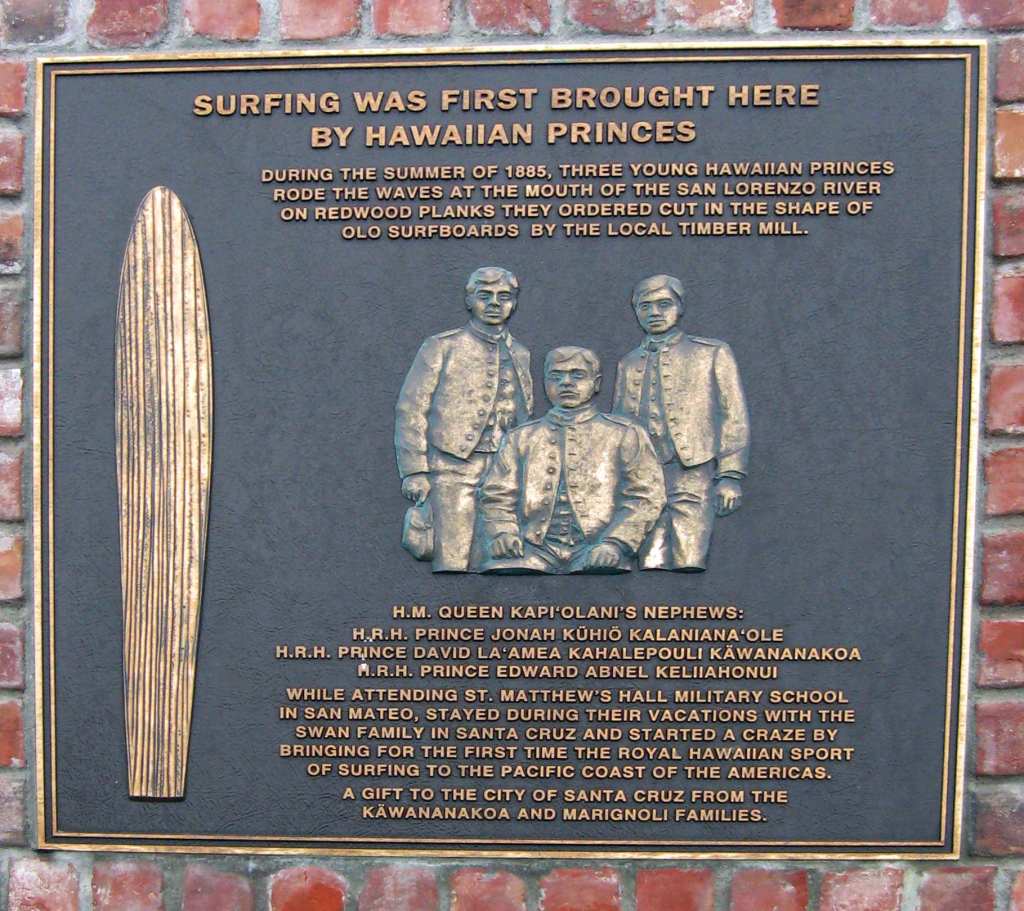Three Hawaiian princes brought the sport of surfing to California and a Santa Cruz museum tells their story.
The Santa Cruz Surfing Museum is inside a lighthouse on Monterrey Peninsula’s northern tip. Although surfing is an old Polynesian sport, Santa Cruz is known as its entry point into the U.S.

Photo Credit: Wikipedia
It was in the middle of summer in 1885 when the princes David Kawananakoa, Edward Keliiahonui and Jonah Kuhio Kalaniana’ole of Hawaii, who were attending St. Matthew’s military school in San Mateo, California, decided to get some boards made and drop them in the ocean.
Everyone enjoying their day at the beach became mesmerized by the trio riding the waves on their massive redwood surfboards.

Photo Credit: Wikipedia
Eventually, the boys left Santa Cruz to return to Hawaii and join the fight for independence. But even after they left, local kids would continue to imitate the way the Hawaiians surfed. Since then, Santa Cruz has always been regarded as the place where California surf culture was born.
Today, in the Santa Cruz Surfing Museum, visitors can see 130 years of surfing chronicled in photographs, surfboards and other mementos.

Photo Credit: Flickr
The lighthouse was a gift in memory of 18-year-old Mark Abbott who drowned in a body surfing accident in 1965. His parents used his life insurance policy to erect the lighthouse in his honor because he loved the ones that dotted the Oregon coast.
The museum was opened inside the lighthouse in 1986 by the city. Surfing is a beloved pastime for many living there and was one of Mark’s favorite activities. From the lighthouse, which sits directly on the ocean, surfing fans can watch perfect 10s and remember the Hawaiian royalty that brought the sport of surfing to the U.S.
What do you think? Want to visit? Let us know if you have in the comments and what you thought!






